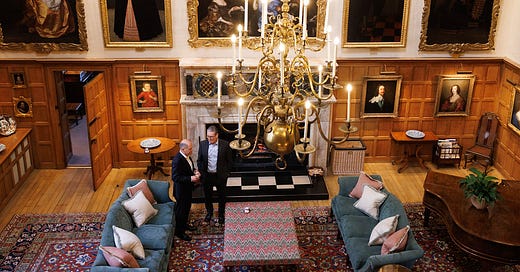Design Postcards: decoding Chequers
A peek inside the UK Prime Minister's official country residence – which is, frankly, a decorative disaster.
Let’s step into Chequers, where Prime Minister Keir Starmer welcomed German Chancellor Olaf Scholz for talks the other day. I am indebted to Sophia Money-Coutts (her Substack is a joy, do subscribe) for finding this photograph, which she headlined:
“Extremely shocking picture of the week”.
Sophia wrote: “This is the Prime Minister’s big posh country house in Buckinghamshire where he (or she) entertains world leaders and conducts important business. This is the grace and favour 10-bedroom house from where Churchill broadcast during the war, and which has been visited by American presidents including Nixon, both Bushes and Clinton. ‘I do not think anyone has stayed long at Chequers without falling in love with it,’ said Margaret Thatcher.”
Warming to her theme, she continues: “And yet how on EARTH could you possibly conduct important business when you’re in a room where that ottoman has been paired with that carpet? Why have …





